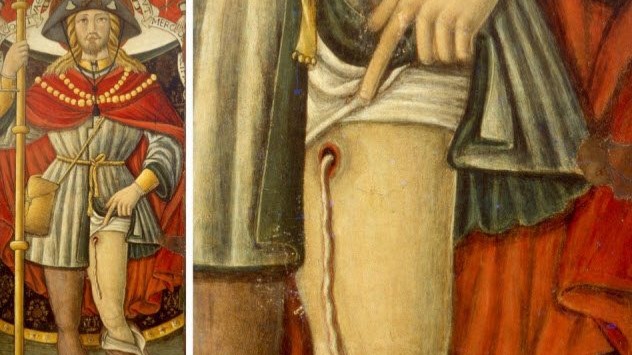Saint Roch's Worm

In 2017, Italian researchers inspected a painting of Saint Roch. The 14th-century Frenchman was said to have cured people of the plague and then contracted it himself. He is often portrayed with a bubo, a swelling on the upper leg of plague victims.
The medieval painting was different. Saint Roch’s leg shows a wound dripping with a long white goo. In the past, the strange filament was thought to be pus, but the recent study authors are convinced that it was a worm.
The unknown painter did not use his imagination, either. This is possibly the earliest representation of a graphic parasite called Dracunculus medinensis. Also known as the Guinea worm, its larvae are ingested via infected water.
After a year’s incubation, things get horrifying. The person’s leg blisters, and a worm up to 1-meter-long (3 ft) erupts through the skin. Though not fatal, it is an excruciating experience.
Saint Roch's Worm is found in...

|
|||
| Top 10 Intriguing Images From Ancient Art | |||
|
( 10 items ) Item Position (rank): 1 |
|||
